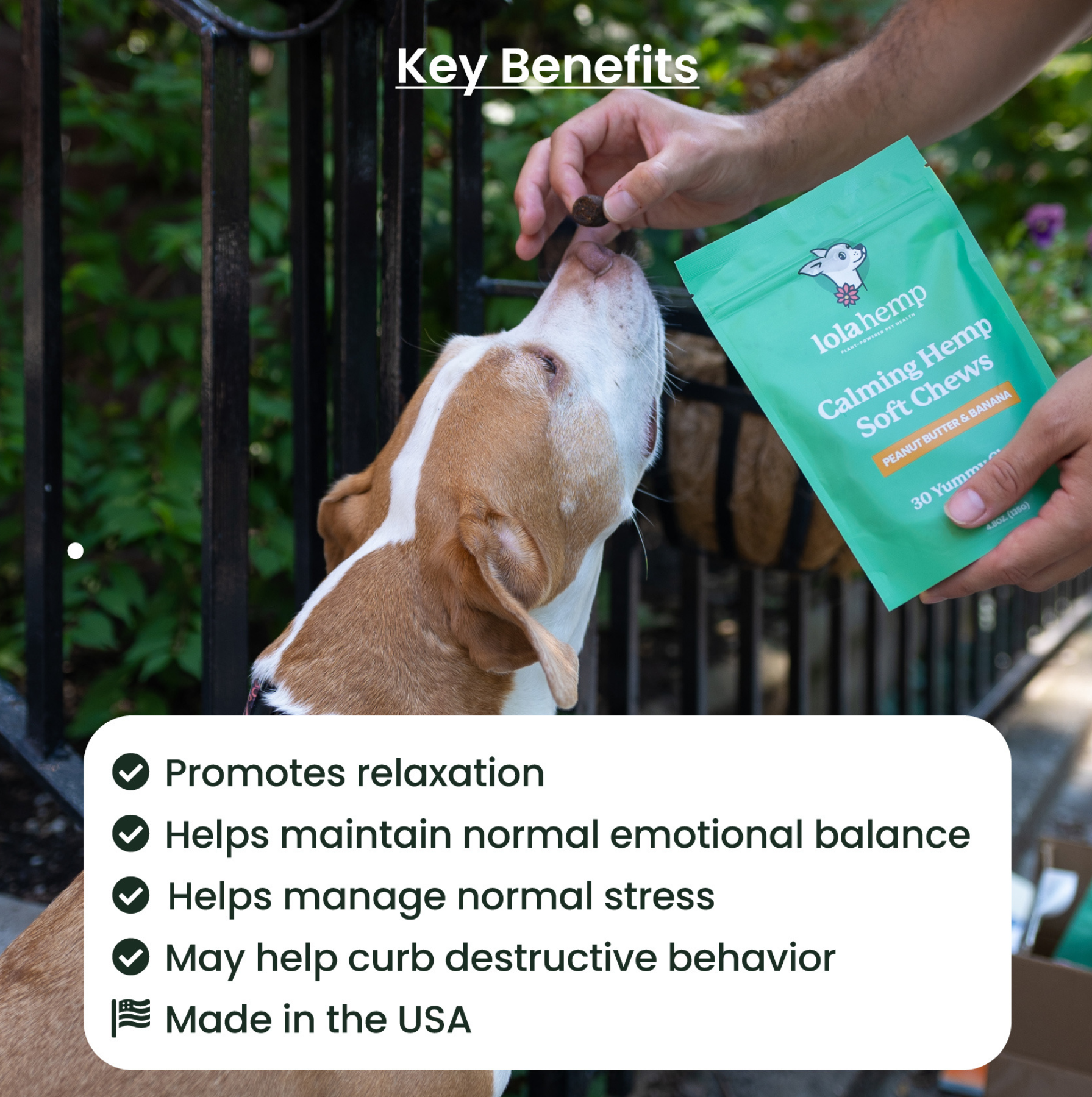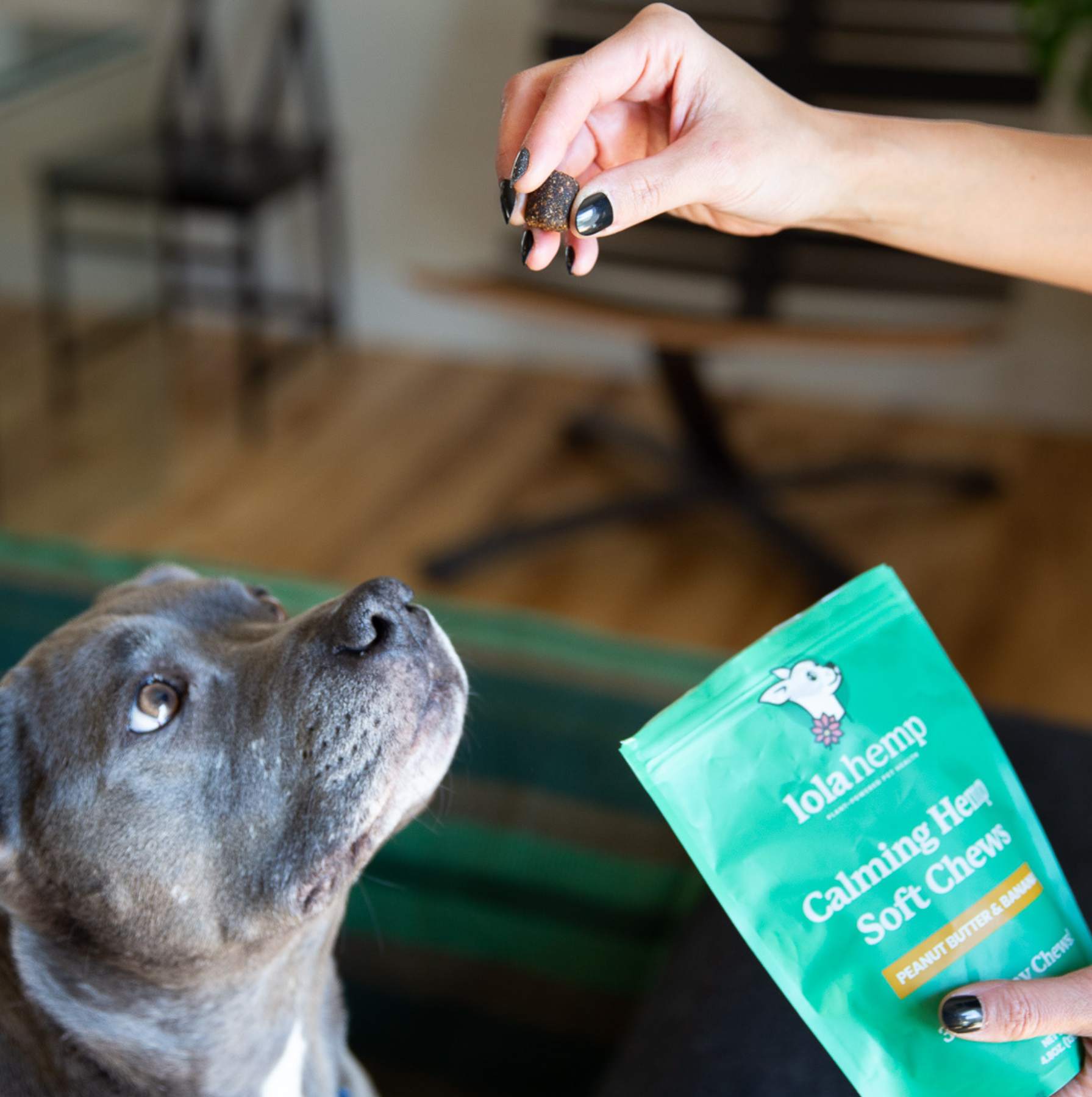As pet parents, noticing any unusual behavior in our furry friends can be a cause for concern. One common issue many owners face is when their dog is pacing and won't lie down. This behavior may be particularly distressing, especially if it persists over time. Understanding why your dog is pacing and how to address it is crucial for their well-being and your peace of mind.
This article will explore the potential causes, symptoms, and treatment options to help your dog feel calm and comfortable again.
Understanding Dog Pacing
Dog pacing is when a dog walks back and forth repeatedly, often appearing restless or anxious. This behavior is typically observed in dogs of all ages but is especially common in senior dogs. It's important to pay close attention to your dog's body language and other symptoms to identify the underlying cause of their pacing.
Potential Causes of Pacing in Dogs
Below are some of the most common causes of pacing in dogs:
1. Anxiety and Stress
Dogs often pace when they feel anxious or stressed. Common triggers for anxiety in dogs include:
- Loud Noises: Thunderstorms, fireworks, and other loud sounds can cause a dog to feel stressed and anxious, leading to pacing.
- Separation Anxiety: Dogs that are left alone for extended periods may develop separation anxiety, resulting in restless pacing.
- Changes in Environment: Moving to a new house, the arrival of a new pet, or significant changes in the household may cause anxiety in dogs.
2. Medical Issues
Various medical conditions can cause a dog to pace due to discomfort or pain:
- Pain or Discomfort: Dogs may pace when they are in pain due to injuries, arthritis, or other health issues.
- Digestive Problems: An upset stomach, bloating, or other digestive issues can lead to discomfort and pacing.
- Respiratory Disease: Difficulty breathing due to respiratory conditions can cause pacing as the dog struggles to find a comfortable position.

3. Senior Dogs and Cognitive Dysfunction
Older canines are more prone to pacing due to canine cognitive dysfunction (CCD), a condition similar to dementia in humans. Symptoms of CCD include:
- Disorientation and Confusion: Senior dogs with CCD may become disoriented and confused, leading to increased pacing.
- Changes in Sleep Patterns: Dogs with CCD often experience changes in their sleep-wake cycle, causing them to pace at night.
- Decreased Interaction: A decrease in social interaction and increased anxiety can also contribute to pacing in older dogs.
4. Neurological Issues
Neurological problems can affect a dog's brain function and behavior:
- Brain Tumor: A brain tumor can cause changes in a dog's behavior, including pacing.
- Neurological Diseases: Conditions such as epilepsy or other neurological disorders can lead to pacing due to changes in brain activity.
5. Ear Infections
Ear infections can cause significant pain, leading to pacing as the dog tries to alleviate the pain. Symptoms of ear infections include:
- Head-Shaking: Frequent shaking of the head or scratching at the ears.
- Discharge: Presence of discharge or foul odor from the ears.
- Pain: Visible signs of pain or tenderness when the ears are touched.
6. Need for Physical Exercise or Mental Stimulation
Dogs with high energy levels may pace out of boredom or the need for more exercise. Ensuring your dog gets enough physical and mental activity is essential:
- Exercise: Regular walks, playtime, and physical activities help expend excess energy.
- Mental Activity: Interactive toys, puzzles, and training sessions keep a dog's mind active and engaged.
7. Digestive Problems
The following digestive issues could make your furry friend uncomfortable and lead to pacing:
- Upset Stomach: Symptoms like vomiting, diarrhea, or nausea can cause a dog to pace.
- Dietary Issues: Sudden changes in diet or food intolerances can also result in digestive issues and pacing.
8. Environmental Factors
Changes in the environment or disruptions to a dog's routine can trigger pacing:
- New Household Members: The introduction of a new pet or family member can cause uneasiness and pacing.
- Changes in Routine: Alterations in feeding times, walking schedules, or sleeping arrangements can lead to restlessness.
9. Behavioral Issues
Some dogs pace due to behavioral reasons, which may include:
- Attention-Seeking: Canines may pace to get attention from their owners.
- Boredom: Lack of stimulation and boredom can result in pacing as a way to pass the time.

Symptoms Associated with Dog Pacing
Some common symptoms include:
Restlessness and Inability to Settle:
Dogs that pace often exhibit persistent restlessness, where they move back and forth without finding a comfortable position. This behavior can indicate soreness, anxiety, or a need for mental or physical stimulation.
Excessive Panting and Drooling:
Anxiety or stress-related pacing may be accompanied by noticeable symptoms of physiological distress such as excessive panting and drooling. These symptoms are often indicative of heightened emotional states in canines.
Changes in Appetite and Weight:
Medical conditions causing pacing can sometimes lead to changes in appetite. Dogs may exhibit reduced interest in food due to pain or conversely, they may exhibit increased appetite as a result of stress or underlying metabolic changes.
Lethargy or Decreased Activity Levels:
Conversely, pacing can sometimes be accompanied by periods of lethargy or decreased activity levels, especially in cases where pain is a contributing factor. Dogs may appear less enthusiastic about usual activities such as playing or going for walks.
Vocalization and Attention-Seeking Behaviors:
Dogs pacing due to uneasiness or boredom may engage in vocalization, such as whining or barking, as a means of seeking attention or expressing distress. These behaviors may intensify during periods of heightened emotional states.
Changes in Sleep Patterns:
In cases where pacing is related to CCD or neurological issues, dogs may exhibit changes in their sleep patterns. This can include difficulty settling down at night, increased nighttime activity, or excessive daytime sleeping.
Visible Signs of Pain:
Dogs experiencing pain or soreness may exhibit visible symptoms such as limping, favoring a particular limb, or exhibiting reluctance to engage in certain activities like jumping or climbing stairs. These symptoms may be more pronounced during or after periods of pacing.
Changes in Social Interaction:
Pacing behavior may also impact a dog’s social interactions. Dogs may become more withdrawn or less interested in interacting with family members or other pets. This can be particularly evident in cases of CCD or anxiety-related behaviors.
Gastrointestinal Symptoms:
Digestive issues, such as vomiting, diarrhea, or changes in stool consistency, can sometimes accompany pacing behavior, especially when related to stress or dietary changes. These symptoms may indicate underlying gastrointestinal problems that require veterinary attention.
Agitation and Irritability:
Pacing canines may exhibit agitation or irritability, particularly in response to stimuli that trigger their pacing behavior. This can manifest as snapping, growling, or other defensive behaviors, especially if the underlying cause is related to pain or soreness.

Treatment Options for Pacing in Canines
When addressing pacing behavior in dogs, identifying the underlying cause is crucial for determining the most effective treatment approach as follows:
Veterinary Evaluation and Diagnosis:
The first step in treating pacing behavior is a thorough veterinary examination to identify any underlying medical conditions or behavioral issues. Diagnostic tests such as blood work, imaging, or neurological exams may be necessary to pinpoint the cause.
Medical Management:
If a medical condition is identified as the cause of pacing, your veterinarian may recommend specific treatments or medications. For example, pain medications or anti-inflammatory drugs may be prescribed to alleviate discomfort from arthritis or other painful conditions.
Behavioral Modification:
Behavioral issues such as uneasiness or attention-seeking behavior can contribute to pacing. A certified dog trainer or veterinary behaviorist can help develop a behavior modification plan tailored to your dog’s needs. This may include positive reinforcement techniques to encourage calm behavior and reduce anxiety triggers.
Environmental Management:
Creating a calm and secure environment is essential for reducing stress and anxiety-related pacing. Use tools such as anxiety wraps, calming pheromone diffusers, or soothing music to create a relaxing atmosphere for your dog. Providing a quiet, comfortable space where your dog feels safe can also help alleviate pacing behavior.
Exercise and Mental Stimulation:
Ensuring your dog receives adequate physical and mental exercise is important for reducing boredom-related pacing. Regular walks, interactive play sessions, and enrichment activities such as puzzle toys or scent games can help expend excess energy and keep your dog mentally engaged.
Nutritional Support:
A balanced diet tailored to your dog’s age, breed, and health needs is essential for overall well-being. In some cases, dietary switches or supplements may be recommended to support joint health, digestive function, or cognitive function in elderly canines experiencing pacing due to age-related changes.
Medication:
In cases where pacing is due to anxiety disorders or CCD, your veterinarian may prescribe medications to help manage symptoms. These medications can include anti-anxiety drugs, antidepressants, or medications designed to support cognitive function.
Regular Veterinary Monitoring:
Ongoing monitoring by your veterinarian is important to assess the effectiveness of treatment and make adjustments as needed. Regular check-ups allow for early detection of any changes in your dog’s condition and ensure that treatment protocols are optimized for their well-being.

When to Seek Veterinary Care
While occasional pacing may not be a cause for alarm, persistent or severe pacing can indicate underlying issues that require professional attention. Below are some guidelines on when to seek veterinary care:
Persistent or Escalating Behavior
If your dog’s pacing behavior persists for more than a few days or appears to be escalating in frequency or intensity, it’s important to consult a veterinarian. Persistent pacing can indicate underlying medical or behavioral issues that need to be addressed.
Accompanying Indications of Distress
If your dog’s pacing is accompanied by other indications of distress, such as excessive panting, drooling, whining, or restlessness, it’s time to seek veterinary care. These manifestations may indicate anxiety, pain, or soreness that requires professional evaluation.
Signs of Pain
Pacing that is coupled with indications of pain, such as limping, favoring a limb, or vocalizing when touched, should prompt an immediate veterinary visit. Pain can result from various conditions, including arthritis, injuries, or other medical issues.
Changes in Appetite or Weight
Sudden changes in your dog’s appetite, whether an increase or decrease, along with unexplained weight loss or gain, warrant a veterinary check-up. These changes can be linked to underlying health problems that need to be diagnosed and treated.
Vomiting, Diarrhea, or Gastrointestinal Issues
If your dog’s pacing is accompanied by gastrointestinal manifestations such as vomiting, diarrhea, or changes in stool consistency, seek veterinary care. Digestive problems can cause significant unease and may require medical intervention.
Respiratory Difficulties
Pacing combined with exhibitions of respiratory distress, such as coughing, wheezing, or labored breathing, is a sign that veterinary care is needed. Respiratory issues can be serious and require prompt attention.
Behavioral Changes
Noticeable changes in your dog’s behavior, such as increased aggression, withdrawal, or confusion, especially in older dogs, should be evaluated by a veterinarian. These changes can be indicative of cognitive dysfunction, neurological issues, or other underlying conditions.
Ear Infection Symptoms
If your dog’s pacing is associated with indications of an ear infection, such as head shaking, scratching at the ears, or discharge from the ears, a veterinary visit is necessary. Ear infections can cause significant soreness and require treatment.
Neurological Indications
Symptoms such as seizures, uncoordinated movements, or changes in gait, along with pacing, should prompt an immediate veterinary visit. These signs can indicate serious neurological conditions that need to be diagnosed and managed.
Unexplained Changes in Routine
If your dog’s pacing is disrupting their usual routine, such as sleep patterns, playtime, or interaction with family members, it’s important to seek veterinary advice. Disruptions in routine can be a sign of underlying health or behavioral issues.

Conclusion
A dog pacing and refusing to lie down may be a sign of underlying issues ranging from anxiety and medical conditions to behavioral problems and environmental stressors. Recognizing the symptoms and seeking veterinary care when necessary is crucial for your pet's health and well-being. By providing a calm environment, ensuring regular exercise, and maintaining a consistent routine, you can help alleviate your dog's distress.
Always consult with your veterinarian for a thorough evaluation and tailored treatment plan to address your dog's specific needs, ensuring they remain happy, healthy, and comfortable.
Frequently Asked Questions About Dogs Pacing and Not Lying Down
Why is my dog pacing and not lying down?
Pacing and refusal to lie down can result from anxiety, discomfort, or underlying health issues such as arthritis, digestive upset, or pain. Identifying the root cause helps guide the best treatment.
Is pacing at night normal for dogs?
Occasional nighttime pacing can be normal, but if it becomes frequent or disrupts sleep, it may be due to anxiety, pain, or cognitive dysfunction, especially in senior dogs.
Can anxiety cause dogs to pace constantly?
Yes, anxiety is one of the most common causes of pacing. Triggers include separation anxiety, loud noises, or environmental changes that make dogs feel unsettled.
How can I help calm my pacing dog?
Provide a quiet environment, regular exercise, and mental stimulation. Calming aids like pheromone diffusers or anxiety wraps may also help. If the behavior persists, consult your veterinarian.
When should I take my pacing dog to the vet?
Seek veterinary care if pacing continues for several days, worsens, or occurs with symptoms like vomiting, lethargy, pain, or breathing difficulty, as these may indicate a medical condition.









